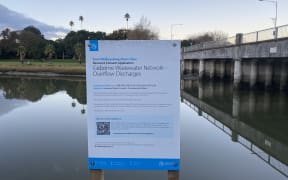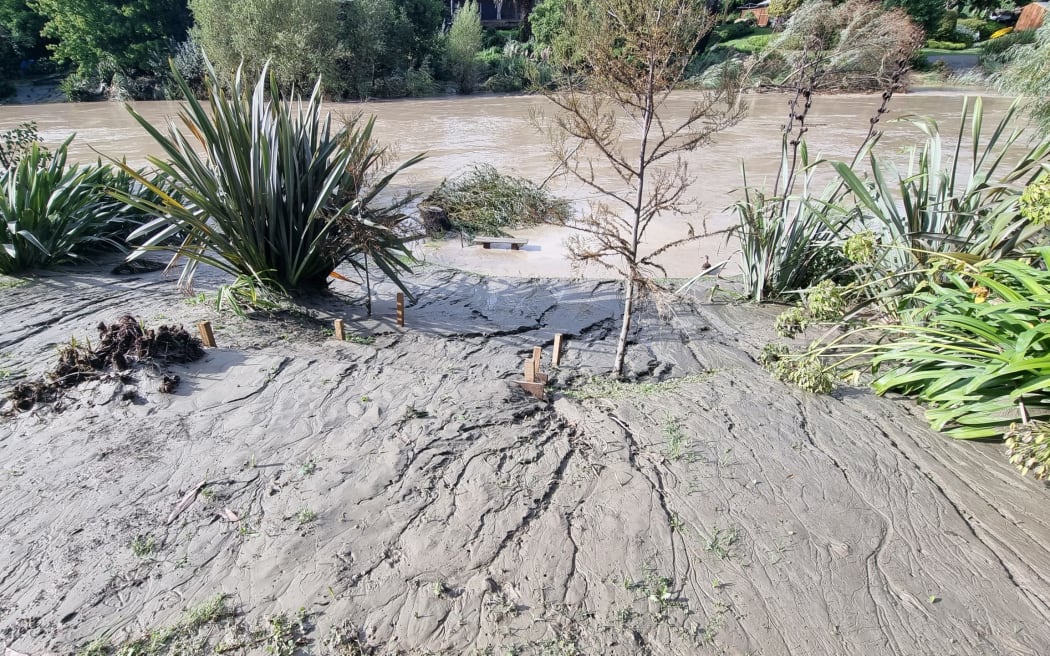
The slimy sides of the river are not only unsightly, but point to deeper issues of its general overall health. Photo: Supplied
A popular Gisborne river that becomes a "liquid slurry of mud" in bad weather is increasingly unusable for recreationalists and wildlife alike, waka ama groups say.
Fed from the hills in the north-east of Gisborne, the Waimatā River weaves its windy way down 20 kilometres to the city, before emptying into Tūranganui-a-Kiwa/Poverty Bay.
For decades it has been enjoyed by water-based groups including rowers, waka ama, kayakers and swimmers.

But those who frequent the river were discouraged by ongoing issues with sludge, debris and poor water quality.
Mareikura Waka Ama Club's Matahi Brightwell has a Queen's honour, the Order of Merit, for his services to the sport, and knew the river better than most.
Brightwell said during his 36 years on the river, he has witnessed its gradual decline, highlighted more recently by the loss of wildlife.
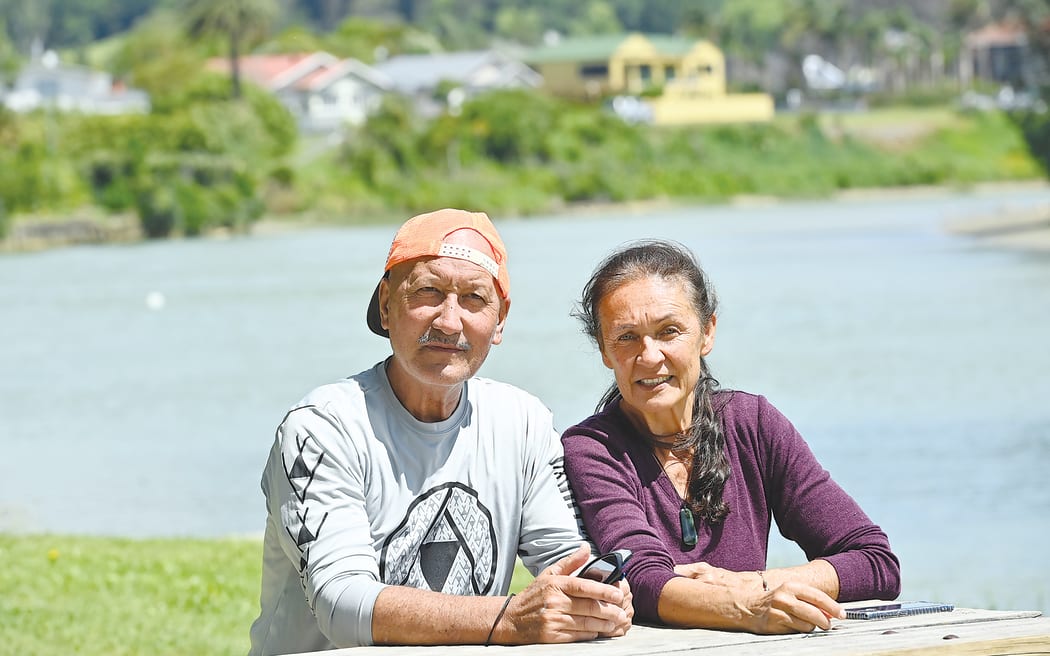
Matahi and Raipoia Brightwell are longstanding members of the waka ama community, who are frequent users of the Waimatā River. Photo: Paul Rickard/Gisborne Herald
Brightwell used the kāruhiruhi (pied shag) - a medium-sized cormorant that has recently completed its migration back from Tasmania - as an example of worsening conditions.
While this feat would normally be cause for celebration, these days there is not much to be happy about. Numbers are down.
"When I first came here, (there was a) huge population, up to 80 birds on the river. You'd be lucky to get two now," Brightwell said.
He also lamented the loss of the kuaka (godwit), a small bird which migrates to Alaska every year. It has been eight years since he last saw one at the river.
"It's filthy, it stinks. At low tide there's a sludge that looks like sewage."
Brightwell's wife, Raipoia Brightwell, echoed that sentiment, saying water quality was having an impact on their waka ama club.
Following heavy rain in Tairāwhiti, emergency wastewater valves were released, further polluting the river and preventing water-based activities for up to a week at a time.
"They normally put a notice there not to use the water, but generally after five days, (it's still bad)."
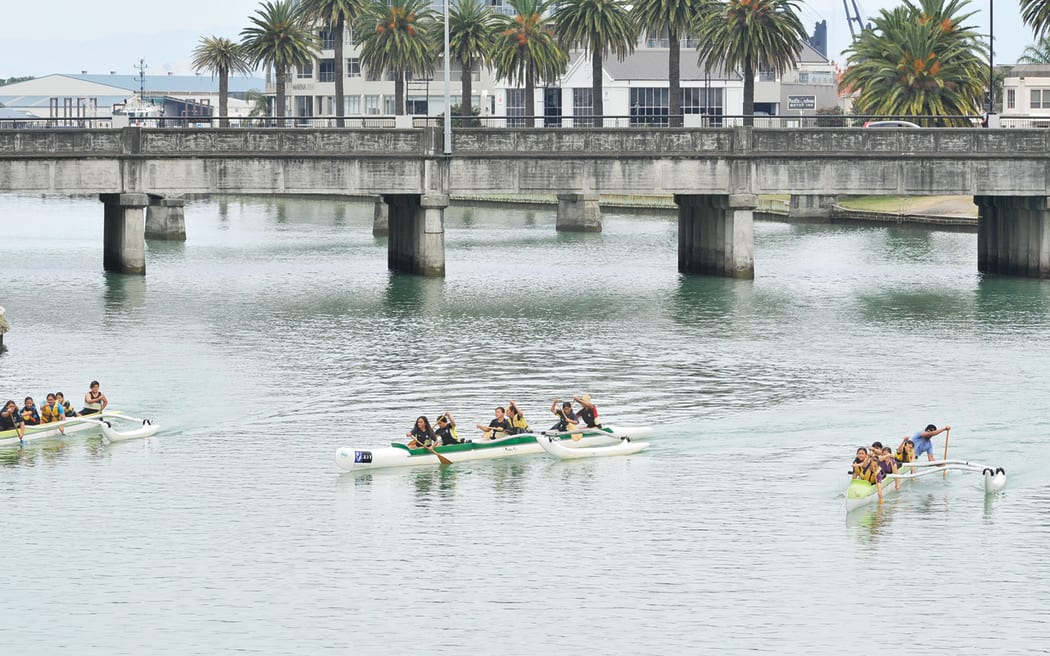
Waka ama paddlers are often seen on the Waimatā River, as well as rowers, kayakers and these days, some paddle boarders. Photo: Liam Clayton/Gisborne Herald
It was not just wastewater discharge that was the issue, however.
Waikereru Ecosanctuary was located next to the Waimatā River, and the organisation said the awa was in trouble.
According to its website, pastoral farming in steep, unstable country has led to severe erosion, with sediment flowing into the river.
In the headwaters, forests which once protected the hills have been clear-felled, meaning heavy rain washes piles of logging debris and bark down the slopes.
A lack of bush buffers created a clear path for that debris to be swept into streams, and out into the river, it said.
Horouta Waka Hoe Club spokesperson Florrie Brooking knew that issue well, having recently engaged in a battle to have logs removed from the Waimatā River which were posing a safety risk to the club.
Asked about the state of the self-described "hugely silty" waters, she does not hold back.
"We've had a history of kids over summer becoming quite seriously infected to the point of needing IV antibiotics. It's an ongoing saga," she said.
"It's probably bordering on dangerous. I wouldn't go in it."
But who was responsible for the health and wellbeing of the river?
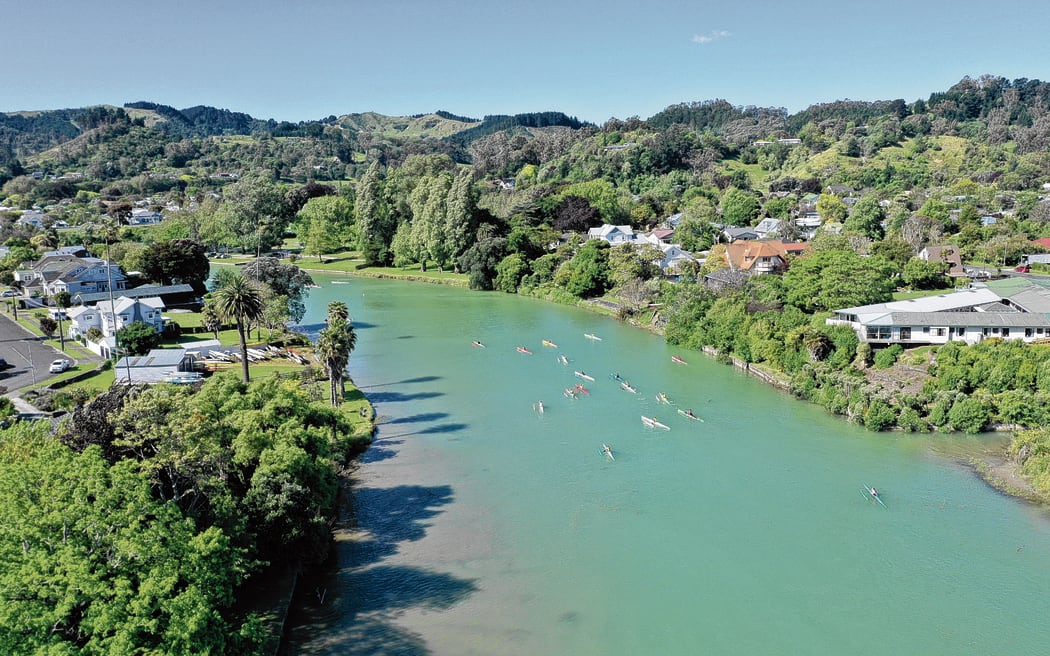
The Waimatā River pictured on a sunny Gisborne day. Fed from the hills in the north-east of Gisborne, the river is about 20km in length. Photo: Ben Cowper/Gisborne Herald
Gisborne District Council was currently working on its Waimatā-Pakarae Catchment Plan, as part of its implementation of the National Policy Statement for Freshwater Management - a national framework implemented in 2020 to provide direction to local authorities on how they should manage fresh water.
The Waimatā-Pakarae Catchment Plan area represented eight freshwater catchments between Gisborne city in the south and Waihau Bay in the north.
The plan aimed to ensure the mauri and values of waterways, reflect the interests of tangata whenua and provide clear direction for sustainable management of fresh water in the catchment.
A draft plan for feedback was expected to be ready early next year, and council principal policy adviser Janic Slupski said it has been working hard to ensure engagement with stakeholders and Treaty partners in and around the area was meaningful.
"Community input is core to catchment planning so getting this right is more important than hitting the initial timeline," Slupski said.
The year 2020 was pivotal for the future of the river's health. Not only was the catchment plan released, the Waimatā Catchment Group was formed.

Scientist Lois Easton says although it is possible to turn the fortunes of the river around, progress will be slow. Photo: Liam Clayton/Gisborne Herald
For the awa to return to a healthy state, it will take both hard work and patience, the group's industry adviser Lois Easton said.
Easton helped coordinate the 50-odd landowners in the catchment who make up the group, along with others who have taken an interest in the river's health.
She offered a non-sanitised view of the situation.
"Once water quality has deteriorated, it's really hard to turn it around.
"Water quality problems are not a quick fix. It will be a multi-decade thing."
Easton said because Gisborne District Council operated as both a regional and district council, it was not able to place the same emphasis on environmental protection that other regional councils were able to.
"Gisborne's not a very wealthy place, and ratepayers say 'fix our roads' a lot more than they say 'fix our rivers'."
An environmental scientist, Easton said the decline in river health was the "tragedy of the commons", where there was not one clear party responsible for its wellbeing.
As a result, it has become neglected by the community as a whole, turning into a "liquid slurry of mud" at times.
"When it rains really heavily, we have wastewater overflows in the Waimatā River, which the poor old waka ama guys are on the receiving end of.
"That's the result of decisions that our whole community has made over many years, not putting funding into our wastewater network.
"The councillors reflect the priorities that the community tells them, and they tell them all the time, 'roads'."
She added that the monthly snapshot data captured on it indicates the problems were not new.
"It's bad, and it's been bad for a long time."
Although there were no quick fixes, Easton did offer some light at the end of the tunnel.
"You've got to be hopeful about the things we can improve. It's not too late. It's never too late to start."
Local Democracy Reporting is Public Interest Journalism funded through NZ On Air
